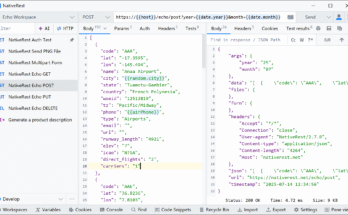E-signature technology is currently widely used in the majority of nations throughout the world. Technology advancements and the legality of electronic signatures have empowered corporations to use them whenever and wherever they are appropriate.
Specifically, this is true in the developed world, where solutions have been easily produced and implemented.
A number of important advantages are provided by integrated electronic signature service providers and contract management solutions, which may typically be divided into three categories.
What Are the Advantages of Electronic Contract Signing?
Signing contracts online has three key advantages. Among them:
- The signing process is quicker
- Enhanced transparency
- Compliance and data integrity have been improved
Let’s take a closer look at each one.
1. The Signing Process is Quicker
When compared, the conventional approach of physically signing a document to add an electronic signature to word results in considerable time savings for the signer and the document.
While it may have been necessary to arrange for delivery of papers or meetings with signing parties in the past, it is now only a question of following the steps on the website to accomplish this.
Because the signers must be physically present in the same area as the contract in order to complete the signing process, it is likely that delays will occur even when contracts are sent electronically, signed, and scanned.
Through the use of electronic signatures, the contract may be signed securely from any device with internet access, reducing the amount of time it takes to execute the transaction.
2. Enhanced Transparency
A significant benefit of conducting business entirely digitally is that the signing parties benefit from having a detailed electronic audit record of the contract and its history at their disposal.
A thorough contract management system guarantees that this audit trail contains all important information from the redlining and negotiating process leading up to the signing, as well as the actual contract file itself.
This will include the names of the individuals who have evaluated the contract, their comments, and whether or not those comments have been accepted, altered, or rejected, as well as any earlier versions of the document that have been reviewed prior to the signing of the final agreement, among other things. If there is any uncertainty in the contract at any point throughout the signing procedure, it will be obvious to everyone involved.
All updates and modifications will be time stamped and securely archived for future reference, and this will help to reduce the possibility of fraud.
During the course of capturing a signature in its own right, not only is the date, time, and counterparty information captured, but other metadata can also be captured at the same time as the signature.
The ability to provide extra information in the record, such as the location, IP address, and device type, allows you to provide further context for the operation and to aid with any future inquiries you may have regarding the procedure.
In addition, and probably most crucially, by employing a contract management system that includes an integrated electronic signature function, rather than a standalone e-signature system, you will be able to easily set up the contract for ongoing maintenance.
3. Compliance and Data Integrity have been Improved
The legal or contract team may maintain complete control over the contract approval process by including the electronic signature in Google Docs or any document procedure into an automated workflow.
What may have been a haphazardly handled procedure between different business departments may now be rigorously managed and monitored across the organisation.
You may mandate the whole sign-off process using a specialised workflow engine, ensuring that it complies with internal and external compliance requirements and that each stage is recorded in connection to a service level agreement (SLA).
Stakeholders will be unable to attempt to circumvent the procedure entirely because the electronic signature step has been included into the workflow.
The procedures can be used to construct a thorough record of the contract and all of the actions that have occurred in connection with it. Each step of the method may serve this purpose.
Conclusion
Although the signature represents only a tiny portion of the contract management process, it is unquestionably the most important since it crystallises the work that has already been done as well as what has been agreed to take place in the future.
By converting it to a free electronic signature software, you may collect critical ancillary information about the signature itself as well as the promise that the signature symbolises.
Those solutions are not equipped to handle obligation and renewal management, and by dividing data between many systems, it becomes more difficult to compile a comprehensive audit trail in the event that one is necessary.
With the help of a contract management solution that has an integrated e-sign functionality, you can streamline and accelerate the signing process while simultaneously enriching the contract record for future reference and defensibility.




